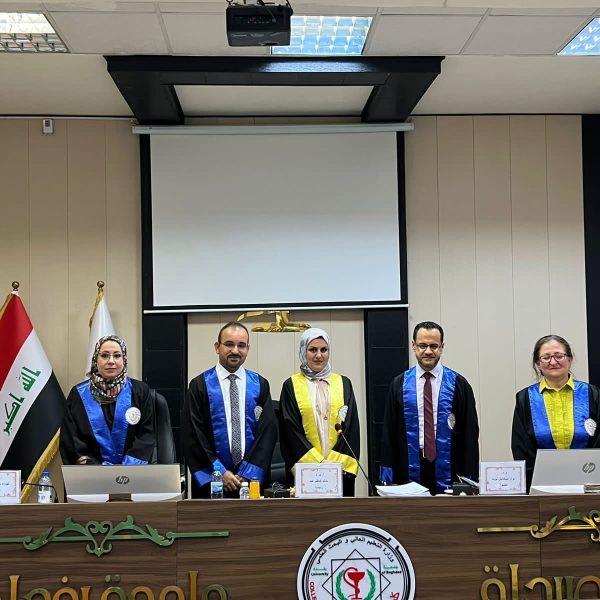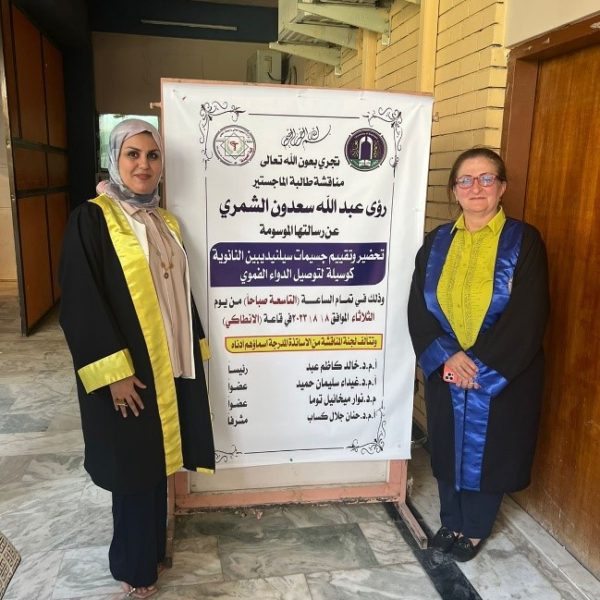The Faculty of Pharmacy discussed the preparation and evaluation of a cilnidipine nanoparticle in an oral film by Ruaa Abdullah Saadoon and his supervisor, Assistant Prof. Dr. Hanan Jalal Kassab, in the Department of Pharmaceutics on August 8, 2023. The aim of this study is to formulate and characterize cilnidipine as nanoparticles using various stabilizers and co-stabilizers in an attempt to enhance the water dispersibility of cilnidipine, which results in an improvement in the dissolution rate and the subsequent preparation of fast-dissolving film to achieve immediate release, a rapid onset of action, and improved patient compliance. The selected formula was according to parameters of particle size, polydispersity index, zeta potential, entrapment efficiency, and in-vitro drug release. The present study involved an initial screening process to identify the optimal polymer 15 formula (P1-P15) for cilnidipine nanoparticles. This was achieved through the utilization of a solvent-anti-solvent method, where various carriers (Soluplus®, Poloxamer 188, PVA cold, PVP K30, HPMC E5) were employed in different ratios. The chosen polymer carriers were subsequently combined with co-stabilizers (PEG200 or glycerol) in varying proportions, resulting in the preparation of 36 distinct formulas (N1–N36). The optimized formula (N4) containing Cilindipine (5 mg), Suloplus (5 mg), and Glycerol (1.19 l) had a particle size and entrapment efficiency of (88.89) nm and (95.84), respectively. The compatibility and crystallinity investigation revealed that cilnidipine was compatible with the other excipients used in the research, and the drug molecule was found to be in an amorphous state within the lipid matrix. Examination of particle shape and surface morphology demonstrated almost spherical nanoparticles. The in vitro drug release profile of formula (N4) illustrates a biphasic pattern in which a burst release is followed by a persistent phase over a 30-minute release period, with an estimated percent of the medication reaching close to 100%. The best formula (N4) was incorporated in PVAc and HPMC E5 with different concentrations. The prepared film formulas were evaluated for their appearance, pH, drug content, and in vitro dissolution at pH 6.8. In conclusion, solvent-anti-solvent precipitation produced CLD nanoparticles with an enhanced dissolution rate, and soluplus polymer was the optimal polymer. Soluplus with glycerol at 5:5:1.19 produced the smallest particle size, less than 100 nm. PVA and HPMC E5 are good candidates for producing fast-dissolving films due to their excellent in vitro release and disintegration, but PVA showed better appearance and less stickiness, and the combination showed faster disintegration and release.





